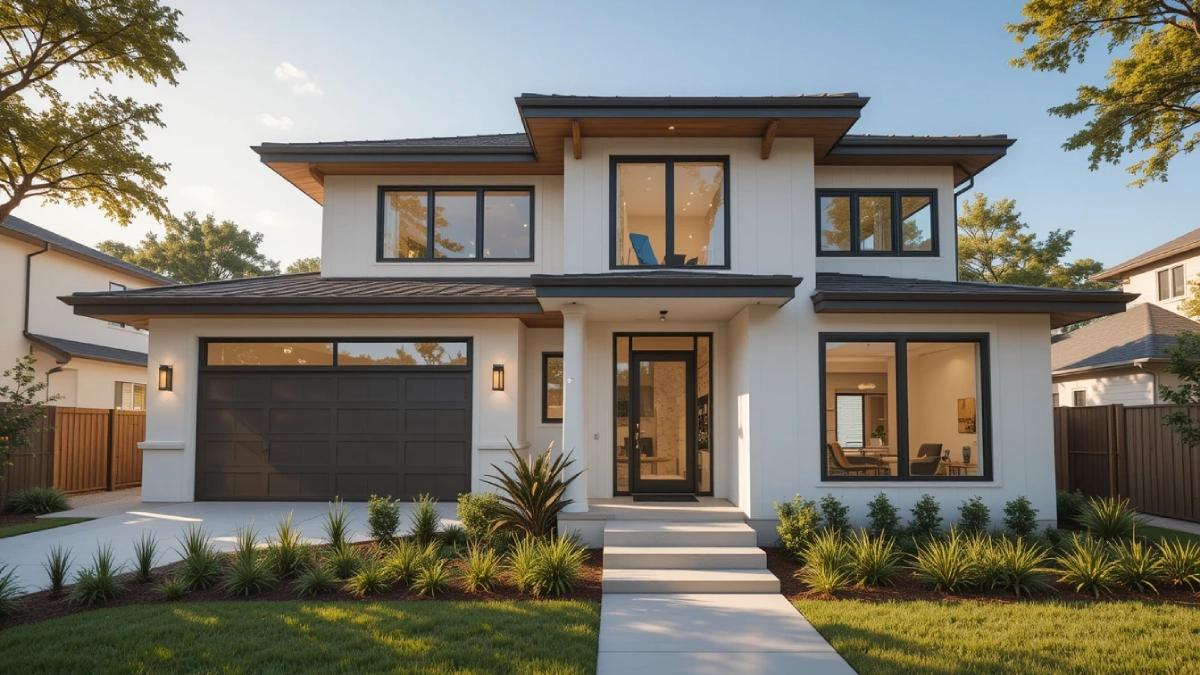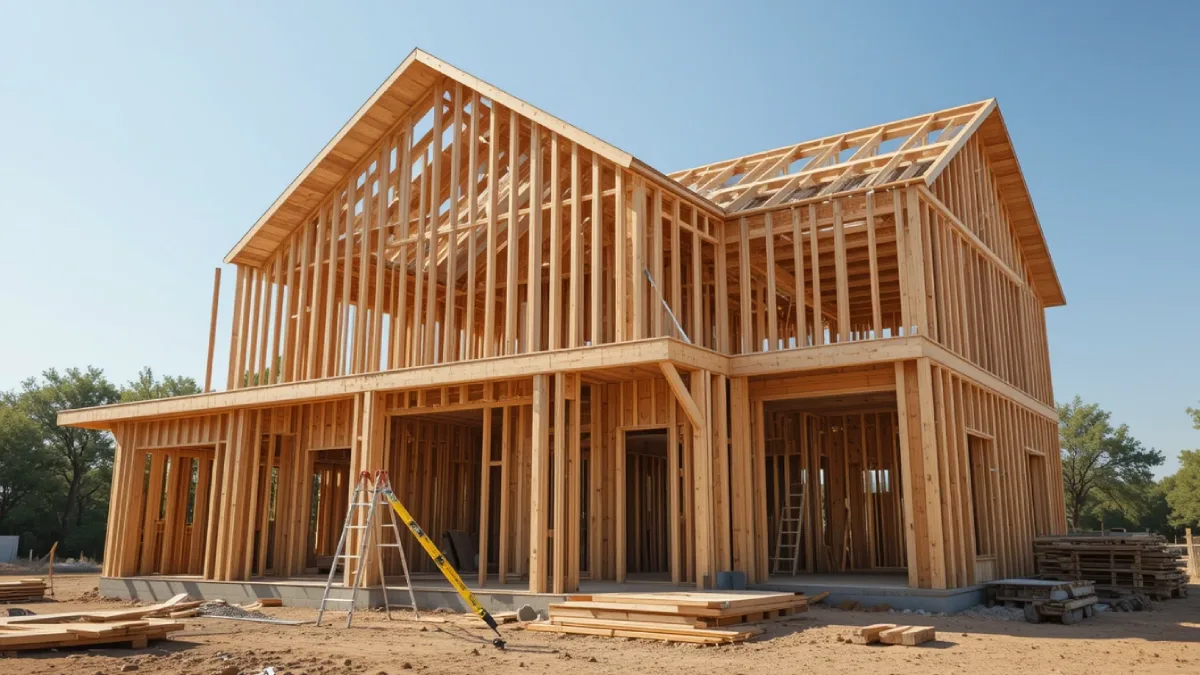Thinking about building your dream home in Texas? You’re not alone. More people are choosing to build instead of buy. It gives them more freedom to choose what they want. But here’s the big question—how much does it cost?
In this guide, we’ll walk you through everything. From land costs to labor, we’ve got you covered. We’ll also break down hidden expenses and timelines. Whether you’re building in Houston or San Antonio, you’ll find the info you need.
Let’s break it down so it’s easy to understand.
Average Cost to Build a Home in Texas
Let’s start with the basics. On average, the cost to build a home in Texas is between $150 to $250 per square foot. That means a 2,000 square foot home might cost between $300,000 and $500,000.
That range can shift based on location, size, and style. Want a bigger backyard? Need a custom kitchen? Those changes all impact the final number.
In cities like Houston or Dallas, prices lean toward the higher end. Urban areas tend to have higher land, labor, and permit costs. On the flip side, building in a rural area might save you money. But it may cost more to set up things like electricity or plumbing.
Still, Texas is more affordable than states like California or New York. That’s a big reason people are moving here to build. Just remember, your choices will shape the price.
What Makes the Price Go Up or Down?
Home construction cost isn’t just about four walls and a roof. Many things change the cost, both big and small. Let’s look at the most common factors:
- Land Cost: Prices vary by city and even neighborhood.
- Home Size: Bigger homes need more materials and labor.
- Custom Features: Upgrades like granite or walk-in showers cost more.
- Labor Rates: Skilled trades, like electricians or plumbers, cost more.
- Materials: Prices for wood, tile, or paint change often.
- Permits and Fees: Every county has its own rules and costs.
Want to keep the price down? Start with a simple design. Pick standard features. And work with a builder who knows how to stick to a budget.
You don’t have to go cheap. You just have to be smart about it.
Hidden Costs to Watch For
Some costs don’t show up right away. First-time builders often miss these. But they can make a big impact on your total bill. Let’s go over a few:
- Site Prep: You might need to clear trees or flatten the land.
- Utility Hookups: You’ll need to connect water, gas, and electricity.
- Soil Tests: This checks if the ground is safe to build on.
- Permit Delays: Waiting on city or county approvals takes time.
- Weather: Rain or heat can slow the building process.
These extras can cost thousands. That’s why it’s smart to keep 10–15% of your budget as a backup. You may not use it, but if you do, you’ll be glad it’s there.
Custom Home vs. Pre-Built Home Costs
So, should you build custom or buy a pre-made home?
Custom homes give you full control. You pick the floor plan, layout, finishes, and more. This means you get exactly what you want. But it comes at a higher cost.
Pre-built homes are usually faster and cheaper. Builders already have plans and materials ready. You might save money, but your choices are limited.
Here’s a quick comparison:
Custom Home:
- Higher cost
- Longer build time
- Fully personal design
Pre-Built Home:
- Lower cost
- Faster move-in
- Fewer custom options
If you want something special and have the budget, go custom. If you’re on a tighter timeline or budget, pre-built might be the better fit.
How Long Does It Take to Build?
Time is money—especially in construction. On average, a custom home takes 6 to 12 months to finish. Some larger homes may take even longer.
Why does it take so long? A few reasons:
- Permits: These can take weeks or months to get.
- Weather: Storms or extreme heat delay progress.
- Materials: Supply chain issues slow things down.
- Design Changes: Any changes after building starts cause delays.
In high-demand places like San Antonio, timelines may be longer. Builders may have a waiting list. Be sure to ask your builder for a realistic timeline.
Tip: Stick to your original design. It helps avoid delays and extra costs.
Working With Texas Custom Home Builders
The right builder can make or break your experience. A great one helps with planning, budgeting, and timelines. They can also keep you from making costly mistakes.
Here’s how to find a solid builder in Texas:
- Read online reviews and check ratings
- Ask for references from past clients
- Tour their finished homes if you can
- Get a detailed contract in writing
Local builders are often better than big national ones. They understand Texas weather, soil, and building codes. They also know how to deal with city and county rules.
Don’t be shy—ask lots of questions. A good builder will be happy to answer them.
How to Start Building in Texas
Starting the process can feel overwhelming. But with a plan, it’s doable. Here are the steps:
- Step 1: Set Your Budget: Decide how much you can afford. Add 10% extra for surprise costs.
- Step 2: Find the Right Land: Pick a place that fits your needs. Think about schools, traffic, and lifestyle.
- Step 3: Choose a Builder: Interview at least 2–3 builders. Pick one who shares your vision.
- Step 4: Design Your Home: Create a floor plan and choose finishes. Think about both style and function.
- Step 5: Get Permits and Start Building: Let your builder handle the paperwork. Then, the building begins!
Each step takes time. But if you move carefully, you’ll avoid big problems.
Final Thoughts
Building a custom home in Texas is a big step. But it can be one of the best choices you’ll ever make.
You get to design your dream space. You pick the layout, finishes, and location. And you’ll know that it’s built just for you.
Just remember: plan well, save smart, and work with the right builder.
Ready to get started? Get a quote today and begin your dream home journey!
FAQs
It depends. Buying may cost less upfront. But building gives you exactly what you want.
Yes! That can lower your total cost. Just make sure the land has access to utilities.
Most people do. You’ll likely need a construction loan first. It later becomes a regular mortgage.
Look for local builders with great reviews. Ask for photos and references.
Try to save at least 20% of your total budget. Also, keep extra for surprise costs.
Don’t forget about soil tests, permits, and weather delays. They all add up.

